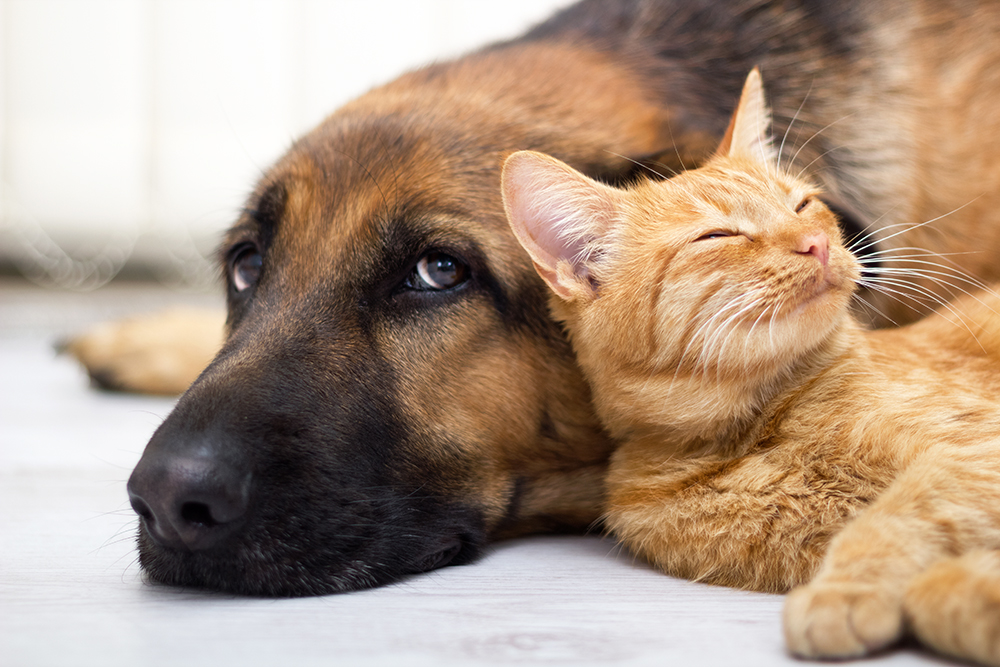Cat people and dog people have long sparred over which species possesses the best brains.
Team Cat points to the felines’ self-reliance as a sign of intelligence. The animals can hunt, which isn’t so great for wildlife but does showcase the cunning predator still lurking within lap kitties. Cats also clean themselves, relieve themselves in tidy litter boxes – or even toilets – and are generally better at food portion control than their canine housemates.
Team Dog cites the canines’ ability to learn complex tasks, especially those that benefit humans. Dogs guide the blind, herd livestock, sniff out explosives and help find survivors buried beneath earthquake rubble. They also have strong memories and an impressive capacity to understand human language.
But as it turns out, all of this resume listing may be unnecessary. According to a new study published in Frontiers in Neuroanatomy, the best way to measure cognitive ability is to tally each animal’s neurons.
Neurons are cells that communicate via electrical charge and populate the brain and central nervous system. They are the units that process information. While measuring intelligence is an incredibly difficult affair, Suzana Herculano-Houzel, a Vanderbilt University neuroscientist, and her colleagues believe their method of quantifying neurons in an animal’s brain, especially in the cerebral cortex, is the most accurate tool for judging its capacity for complex thought.
So which animal comes out ahead in the Great Neuron Census? Brace yourselves, Team Cat.
“Dogs have about twice as many neurons as cats,” said Herculano-Houzel, who wrote a book about brains called “The Human Advantage.”
But wait: The average dog is larger than the average cat. Isn’t it a given that dogs would have larger brains and therefore more neurons? This is where things get interesting.
The study found the overall mass of one’s gray matter is not what’s important. In addition to the dog and cat, the team examined brains from a domestic ferret, a banded mongoose, a raccoon, a striped hyena, an African lion and a brown bear. While the brown bear’s brain was three times as large as the dog’s, the dog’s had more neurons. In fact, the brown bear’s neuron count was similar to that of the cat, an animal whose brain is about 10 times smaller.
To put some numbers in play here, a cat has 250 million neurons in the cerebral cortex to a dog’s 530 million. Both species are dwarfed by the average human, who clocks in at 16 billion cortical neurons.
But one of the more surprising insights from the research has nothing to do with cats, dogs or people. It’s about raccoons, those “trash pandas” that have long been dismissed as vermin or vectors for the rabies virus. Within the raccoon’s cat-sized brain lurks a dog-like number of neurons. So many, in fact, that if you were to look only at neuron count and brain size, you might mistake the raccoon for a small primate.
“And that is saying a lot,” Herculano-Houzel said. “Because something that we found previously is that there’s a huge difference between how many neurons you find in a primate or in a non-primate brain of the same size.”
Jessica Perry Hekman, a veterinary geneticist at MIT and Harvard’s Broad Institute, said there are a number of reasons to be cautious in interpreting the study’s results. For one, she said, the link between neuron numbers and intelligence is anything but proven.
“Which isn’t to say it’s wrong,” Hekman said, “but that it’s definitely something that they’re just starting out with and collecting information on.”
The study also had a small sample size. With the exception of dogs, who contributed two brains to the study, each of the other species was represented by just one brain. (Good brains are hard to come by, Hekman acknowledged.)
The study’s comparison of domesticated, wild and zoo animals could also have an important influence on the results, Hekman said. Researchers have found experience affects brain development, especially in early life: Rats raised in pens with lots of enrichment, like toys or complicated territory to explore, develop more synapses, or connections between neurons, than rats raised in barren pens. So it’s possible the life history of the hyena or mongoose played a role in its brain anatomy. Hekman said she thinks an animal’s number of synapses, rather than neurons, might be a more accurate measure of its intelligence.
Send questions/comments to the editors.


